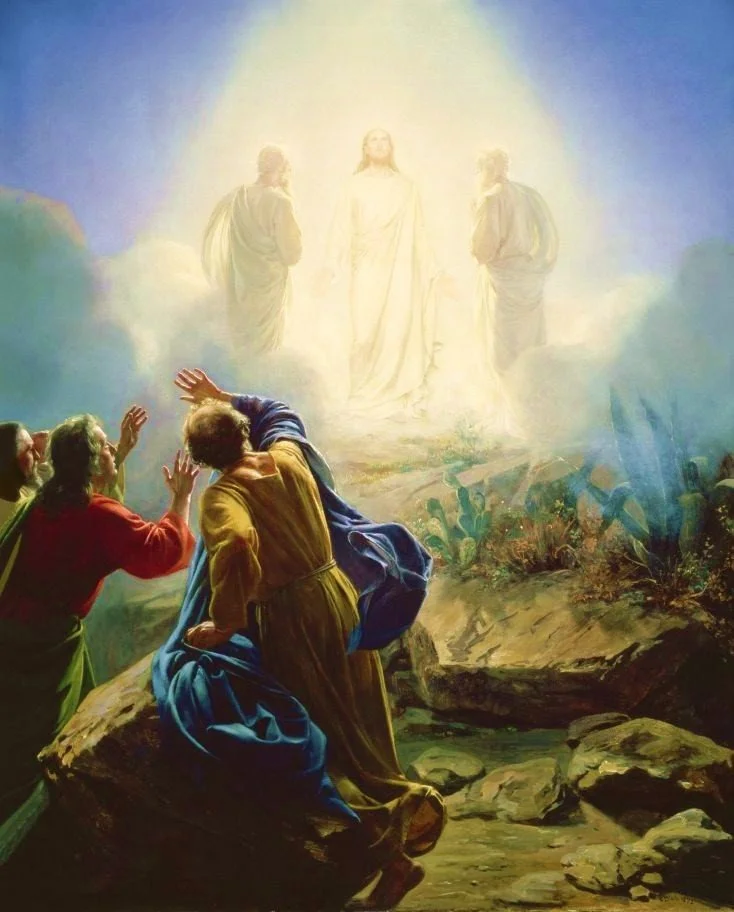The Deity of Jesus Christ
Transfiguration of Jesus. Painting by Carl Bloch (1834–1890). Public domain.
The gospel of John declares the deity of Christ with clarity and power. It begins with the magisterial statement
In the beginning was the Word, and the Word was with God, and the Word was God. (John 1:1)
Skeptics claim John 1:1 in its present form was not in the original gospel of John. Some claim the emperor Constantine invented the doctrine of the deity of Christ and forced it on the church at the Council of Nicaea in 325 AD. Examination of ancient New Testament manuscripts and early church writings proves that claim is false. Papyrus P66 has an early copy of John from the late second or early third century AD. It has John 1:1 as worded in our modern Bibles. Papyrus P75, from the same time frame, also has an early copy of John with John 1:1 as worded in our modern Bibles. Constantine was born in c.272 AD. Therefore P66 and P75 precede the reign of Constantine by several decades.
Church fathers cited the gospel of John long before Constantine was born. In Against Heresies (book 1, chapter 8, paragraph 5), Irenaeus (c.130-c.202 AD) wrote
Since, therefore, he treats of the first origin of things, he rightly proceeds in his teaching from the beginning, that is, from God and the Word. And he expresses himself thus: "In the beginning was the Word, and the Word was with God, and the Word was God; the same was in the beginning with God." Having first of all distinguished these three-God, the Beginning, and the Word-he again unites them, that he may exhibit the production of each of them, that is, of the Son and of the Word, and may at the same time show their union with one another, and with the Father.
In Exhortation to the Heathen (chapter 1), Clement of Alexandria (c.150-c.215) wrote
You have, then, God's promise; you have His love: become partaker of His grace. And do not suppose the song of salvation to be new, as a vessel or a house is new. For "before the morning star it was;" and "in the beginning was the Word, and the Word was with God, and the Word was God." Error seems old, but truth seems a new thing.
Origen (c.184-c.253 AD) wrote a commentary on the gospel of John. He alluded to the wording of John 1:1 in several places. For example, in book 1, chapter 42, he wrote
We must accordingly look at what there is to be seen in human affairs between the saying, "The Word (reason) was made flesh" and "The Word was God." When the Word was made flesh can we say that it was to some extent broken up and thinned out, and can we say that it recovered from that point onward till it became again what it was at first, God the Word, the Word with the Father; the Word whose glory John saw, the verily only-begotten, as from the Father.
The evidence is clear. Our modern wording of John 1:1 was in the original gospel of John, and Constantine did not fabricate the deity of Jesus Christ.
For an example of what an ancient New Testament manuscript looks like, examine the page of papyrus P75 that has the ending of Luke and the beginning of John. You can view the page at the link below, which leads you to a digitized copy of P75 in the manuscript collection of the Center for the Study of New Testament Manuscripts (the CSNTM in Plano, Texas). You will see the wording of John 1:1 in its original Greek language. Our modern Bibles have accurate translations of the wording.
Page of P75 With the Ending of Luke and the Beginning of John
Please take some time to browse the extraordinary New Testament resources available to all at the website of the CSNTM.
